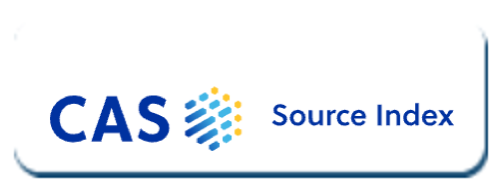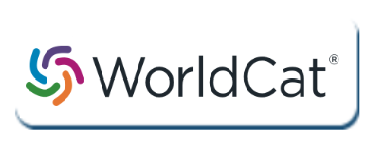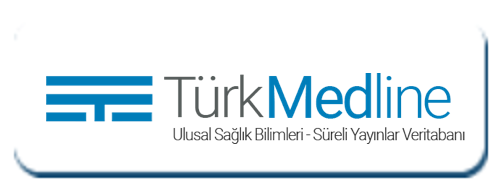Factors affecting extracorporeal shock wave lithotripsy (ESWL) success
DOI:
https://doi.org/10.5281/zenodo.8342565Keywords:
Extracorporeal Shock Wave Lithotripsy (ESWL), Kidney stone, LithotripsyAbstract
Objective: Our aim in this study was to evaluate the predictive properties of success in patients who underwent Extracorporeal shock wave lithotripsy (ESWL).
Materials and methods: The medical records of 176 patients, who underwent ESWL for kidney stones were retrospectively reviewed. The study focused on individuals with single kidney stones measuring less than 2 cm. After the ESWL, patients who were not stone-free were evaluated as group 1, and stone free patients as group 2.
Results: The study encompassed two distinct groups: Group 1 with 67 participants and Group 2 consisting of 109 participants. In this study, which included 176 patients, the incidence of stone-free was found to be 62% (109/176). Of the patients, 56% (n=99) underwent ESWL once, 31% (n=55) twice, 8% (n=14) three times, 3% (n=5) four times, and 2% (n=3) received the treatment five times. Group 1 stones exhibited an average density of 978±357 HU, contrasting with Group 2's 784±318 HU. The disparity between these groups was significant, with a p-value of <0.001. Group 1 stones averaged 11.7±4.2 mm in size, while those in Group 2 measured 9.4±3.9 mm on average (p<0.001). According to the logistic regression test results, it was determined that stone size (p=0.007, OR: 0.89) and stone density (p=0.002, OR: 0.99) were two important independent predictors affecting the success of ESWL. Using a cut-off value of 1025 HU for stone density, we observed a sensitivity of 50% and a specificity of 82% in predicting the success of ESWL. The area under the curve (AUC) was 0.67.
Conclusions: ESWL remains a valuable, non-invasive modality for the management of kidney stones. Stone size and density stand out as key predictive parameters for its success.
References
Piana A, Basile G, Masih S, Bignante G, Uleri A, Gallioli A, et al. En representación del grupo de trabajo de trasplante renal de la sección de Jóvenes Urólogos Académicos (YAU) de la Asociación Europea de Urología (EAU). Kidney stones in renal transplant recipients: A systematic review. Actas Urol Esp (Engl Ed). 2023:S2173-5786(23)00101-4.
Setthawong V, Srisubat A, Potisat S, Lojanapiwat B, Pattanittum P. Extracorporeal shock wave lithotripsy (ESWL) versus percutaneous nephrolithotomy (PCNL) or retrograde intrarenal surgery (RIRS) for kidney stones. Cochrane Database Syst Rev. 2023;8(8):CD007044.
Osther SS, Andersen K, Andersen M, Andreassen KH, Bube S, Bigum LH, et al. Kidney stone disease. Ugeskr Laeger. 2023;185(14):V11220687.
Malinaric R, Mantica G, Martini M, Balzarini F, Mariano F, Marchi G, et al. The Lifetime History of the First Italian Public Extra-Corporeal Shock Wave Lithotripsy (ESWL) Lithotripter as a Mirror of the Evolution of Endourology over the Last Decade. Int J Environ Res Public Health. 2023;20(5):4127.
Schulz AE, Green BW, Gupta K, Patel RD, Loloi J, Raskolnikov D, et al. Management of large kidney stones in the geriatric population. World J Urol. 2023;41(4):981-92.
Boissier R, Rodriguez-Faba O, Zakri RH, Hevia V, Budde K, Figueiredo A, et al. Evaluation of the Effectiveness of Interventions on Nephrolithiasis in Transplanted Kidney. Eur Urol Focus. 2023;9(3):491-9.
Thangavelu M, Abdallah MY, Isola OJ, Kotb A. Management of encrusted ureteral stents: Two center experience. Arch Ital Urol Androl. 2022;94(3):305-10.
Peng T, Zhong H, Hu B, Zhao S. Minimally invasive surgery for pediatric renal and ureteric stones: A therapeutic update. Front Pediatr. 2022;10:902573.
Do MT, Ly TH, Choi MJ, Cho SY. Clinical application of the therapeutic ultrasound in urologic disease: Part II of therapeutic ultrasound in urology. Investig Clin Urol. 2022;63(4):394-406.
Kim J, Stewart V, Talwar G, Uy M, Hoogenes J, Matsumoto ED. A systematic review of postoperative outcomes of kidney stone surgery and meta-analysis of outcomes of percutaneous nephrolithotomy in individuals with spinal cord injury. Spinal Cord. 2023;61(9):469-76.
Shastri S, Patel J, Sambandam KK, Lederer ED. Kidney Stone Pathophysiology, Evaluation and Management: Core Curriculum 2023. Am J Kidney Dis. 2023:S0272-6386(23)00670-4.
Yin S, Zhou Z, Zhang F, Wu J, Lin T, Wang X. Treatment of donors' asymptomatic small kidney stones and post-transplant outcomes: a meta-analysis. Urolithiasis. 2023;51(1):104.
Azizoğlu M, Sağır S. The performance of the inflammatory indexes in predicting double J catheter insertion necessity among children and adult patients with ureteral Stone. Acad J Health Sci. 2023;38(6):74-8.
Demir M, Dere O, Yağmur İ, Katı B, Pelit ES, Albayrak İH, et al. Usability of shear wave elastography to predict the success of extracorporeal shock-wave lithotripsy: prospective pilot study. Urolithiasis. 2021;49(3):255-60.
Soliman MG, Gameel T, El-Tatawy H, El-Abd AS. Extracorporeal shock wave lithotripsy for distal ureteric stones: which is the ideal approach? Int Urol Nephrol. 2020;52(12):2269-74.
Xun Y, Li J, Geng Y, Liu Z, Yu X, Wang X, et al. Single extracorporeal shock-wave lithotripsy for proximal ureter stones: Can CT texture analysis technique help predict the therapeutic effect? Eur J Radiol. 2018;107:84-9.
Downloads
Published
How to Cite
Issue
Section
License
Copyright (c) 2023 Journal of Clinical Trials and Experimental Investigations

This work is licensed under a Creative Commons Attribution 4.0 International License.
![]() The journal is licensed under a Attribution4.0 International (CC BY 4.0).
The journal is licensed under a Attribution4.0 International (CC BY 4.0).











